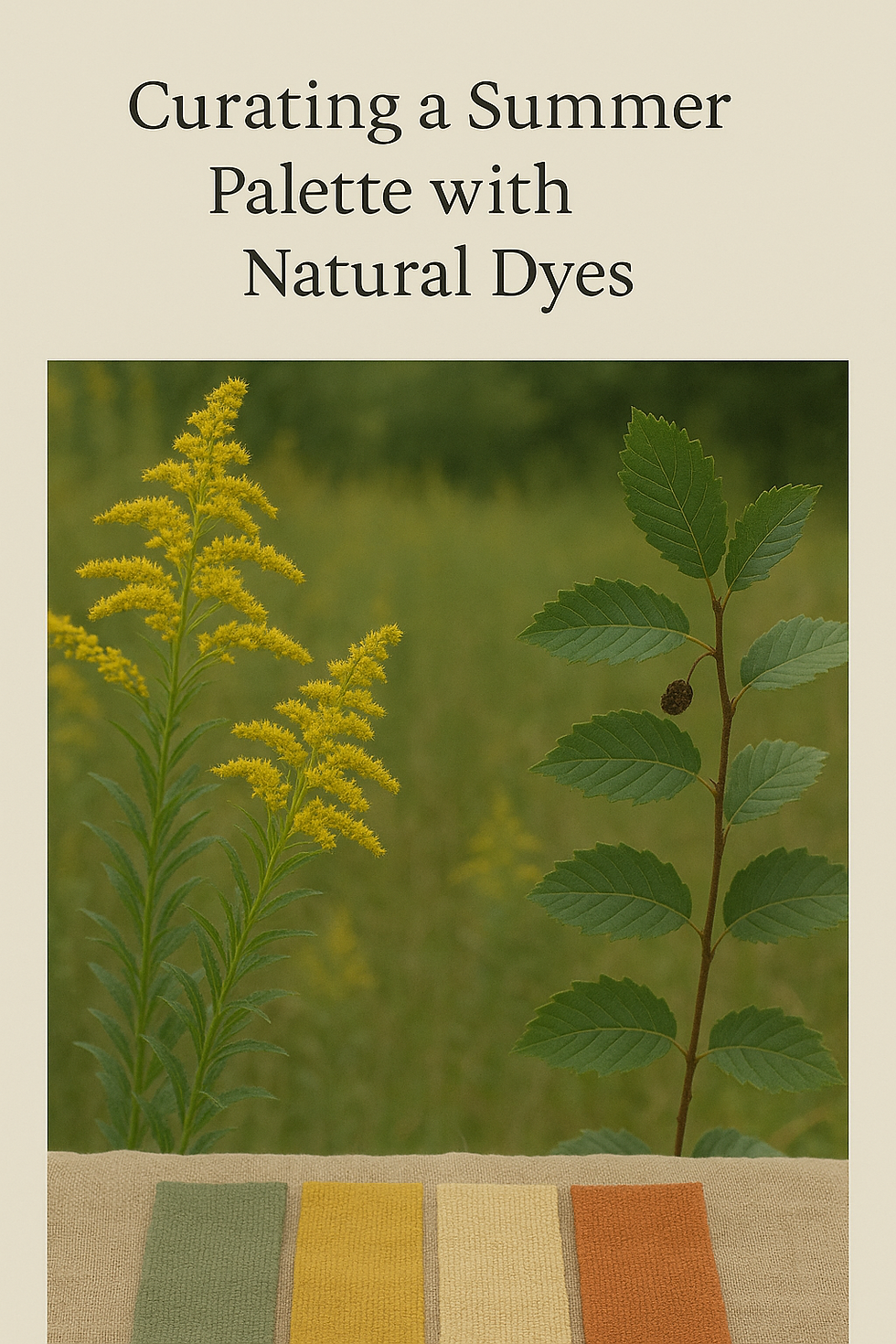Genipa americana, the mystical blue Jagua from South America.
- Suzanne Dekel
- 6 jan 2022
- 4 minuten om te lezen
The fruits of the Genipa americana are known as caruto, huito, jenipapo, guaitil, tapaculo, xagua, maluco, and vito, but most commonly Jagua, (the 'J' is pronounced as an 'H') which is what we will call it in this article.
When I heard about it I KNEW I had to get my hands on this magic. Vat-less blues, that you can print with, are the dream of every natural dyer.

The tall trees (up to 30 meters) that grow the Jagua fruit, are native to the tropical forests of the Americas and the Caribbean. A Genipa tree produces up to eleven kilos fruit. The Jagua fruits are eight to eleven cm long and oval, they look a bit like a hairless kiwi or even a guava and are said to taste like dried apple. The ripe fruit is a diuretic, an antibiotic, and can kill parasites. The fermented infusion makes a great cold remedy. Some Guatamalan tribes carry jagua to ward off ill-fortune and disease. It is often used in deserts and sweets. Jagua is a fruit high in vitamin B, minerals such as iron, calcium, phosphorus, and proteins, lipids and fibers.

The unripe fruit has always been known for its colouring abilities by the indigenous people of the Amazonas, it is a tradition that must be thousands of years old. Most tribes like the Emberá Wounaán, a native tribe in Panama, use fresh Jagua as a corporal painting, for ceremonial purposes and because it repels insects. The Matsés Indians of Peru also insert it underneath the skin to create permanent tattoos.
The stain on your skin could last more than a month on the skin surface,

How does it work: Unripe Jagua fruit produces a colourless juice in the inner pulp. When exposed to air, the liquid transforms from light brown to blue-black to jet black. The resulting pigment stains surfaces for up to 20 days on skin, and forever on fabrics.

Technically speaking; the phytopigment Geneposide (a compound also found in Jasmin and Gardenia fruits), forms the stable pigment of Genipin (which is an iridoid compound) when it comes into contact with protein (such as skin, but also present in the outer layer of the fruit itself).
Before use: always wear gloves when working with Jagua powder, pastes and dye baths, because it stains EVERYTHING, but you will only see that after a few hours so you think you are fine.
Temporary tattoos, we use the 100% dried juice of the Jagua fruit, mixed with guar gum. If you want to mix your own Jagua with guar gum it's 2 parts Jagua powder on 0.75 part guar gum.
To this you add:
9 parts water (cold)
0.3 parts oil (like almond oil)
Oil is used to prevent the paste from drying out too quickly, if you use essential oil like rosemary or lavender it will also help in keeping the Jagua paste good for a longer time.
I recommend making smaller batches such as; 5 grams Jagua mixed with 2 grams of guar gum, 45 grams water and 1 gram almond oil (that is one or two drops).
This amount was enough for a nice container of print paste which printed me two sheets of A4 paper, two large fabric scarves and I still had lots left to keep in the freezer.
Mix the dry ingredients very well before adding liquids and make sure you have no lumps after you finish stirring in the water and oil, because they will block the flow of your gel when using. Mix together in a little bowl into a gel, stirring should take at least 10 minutes. Add a little bit more water if you think it is too thick but make sure it is not runny. The mixture should be homogenous and 'bouncing' a bit like pudding.
Wait at least 10 minutes before using.
Apply generously to the skin with a fine line applicator, cone (like you would use for a henna tattoo), or brush and stencil. I transferred the gel to a small zip loc bag and cut off one of the bottom corners.
Allow Jagua to dry completely for at least 30 minutes. Peel the dried Jagua from your skin and wash with soap and cold water. The longer you leave it on, the darker the design will be become. The design will darken to its final bluish-black colour in 24-48 hours. (You may possibly not see anything at all for the first few hours, like me. Patience!) The design will last 20 days and more and disappears slowly as the skin exfoliates.


Store your gel in the freezer between uses. With proper storage, it can last for 6-12 months. The Jagua powder itself has a shelf life of two years as long as it is stored in a closed container free from moisture and heat.

In food you can safely add Jagua powder to ice creams and mousses for fun blue food. It is a perfectly safe food colourant. I will be reporting back with food appplications.
Print paste on paper with Jagua. Use the recipe for the tattoo gel above. I leave the oil out here. Use a stencil (like I showed in this blog about screen printing) and a cake icing scraper to apply the paste to dry fabric (I used my big silk printing screens) and let it dry.

Dyeing other materials. In the Amazonas the fresh Jagua fruit is used to colour baskets, but we have no experience with this. I tried printing on fabric but the result was very light and I did not love it that much, but I am thinking I should maybe try on wool because it has keratin, like human skin, and warm it a little bit.
Want to try working with Jagua? We have spray dried fruit powder here: https://www.suzannedekel.com/product-page/jagua-powder-genipa-americana
https://www.sciencedirect.com/topics/agricultural-and-biological-sciences/genipa-americana









